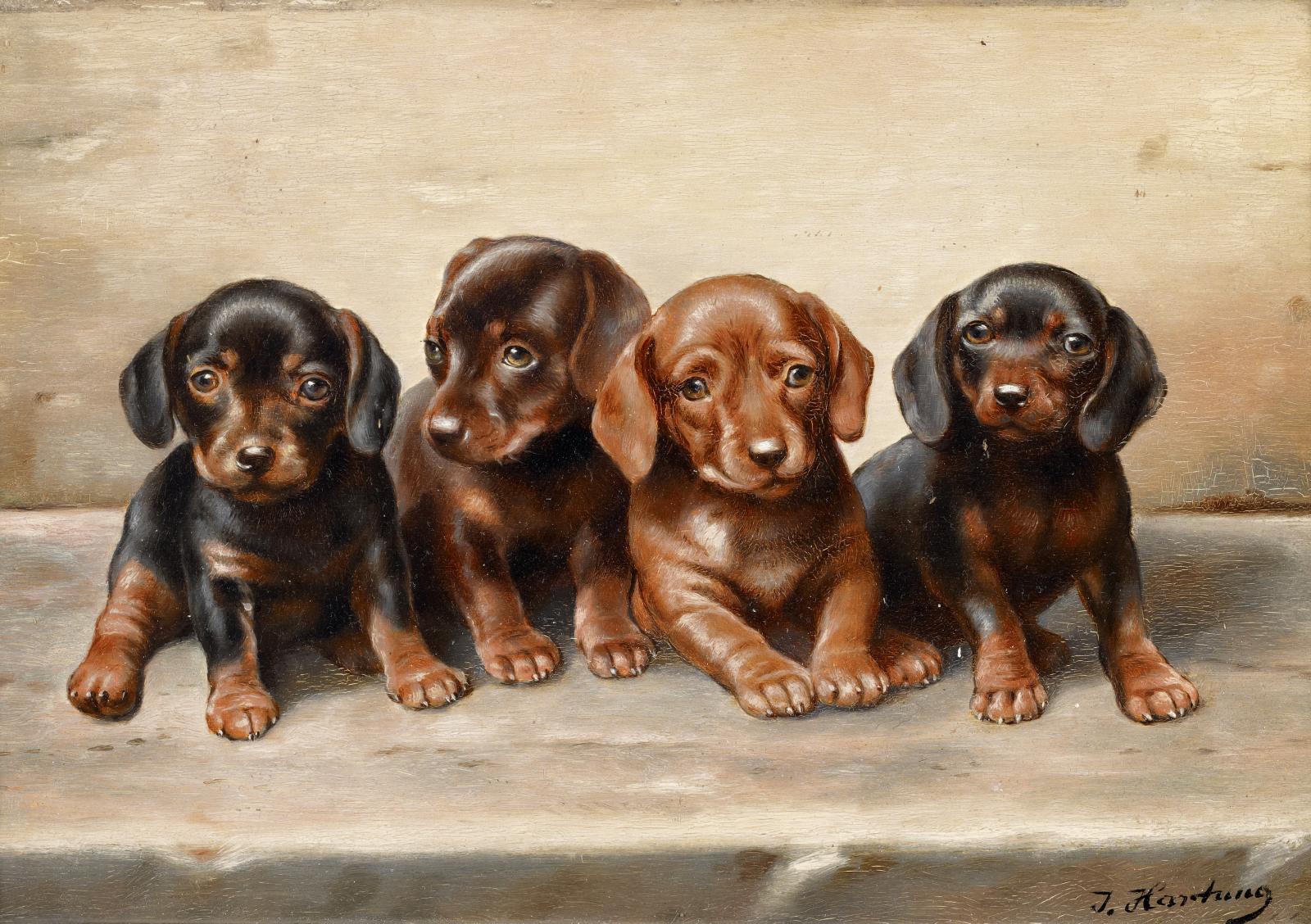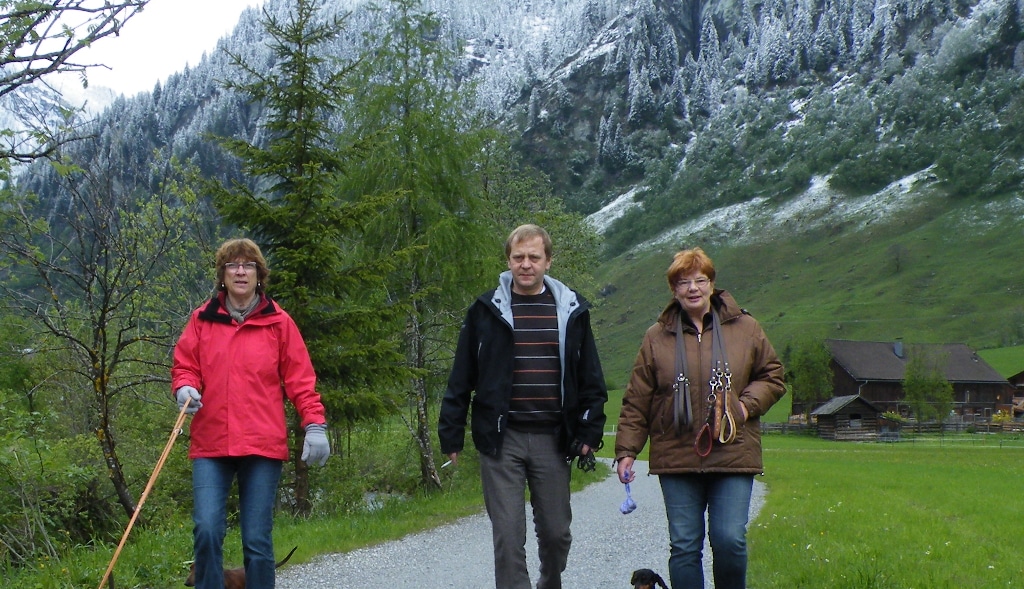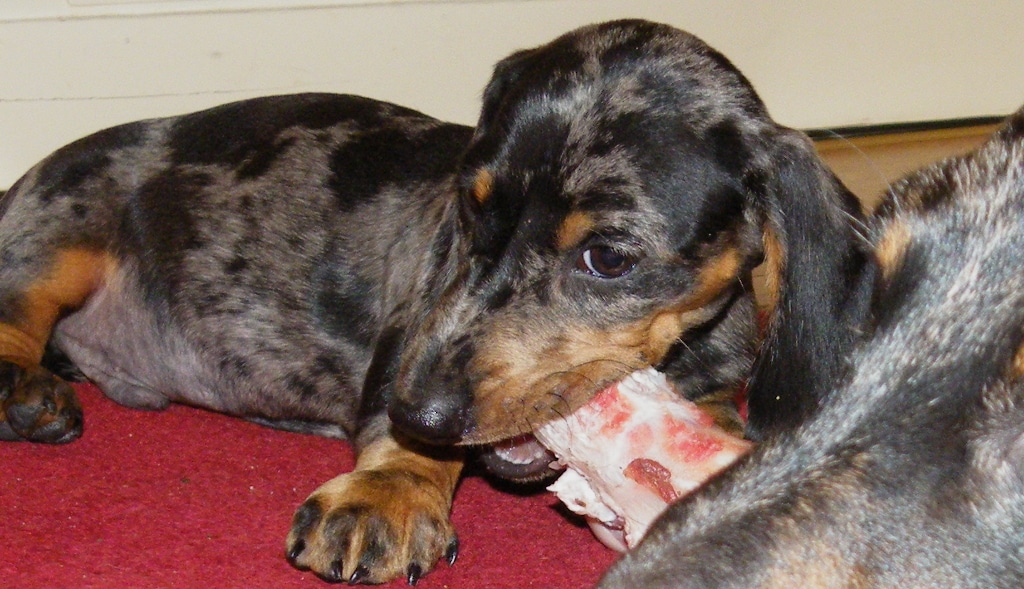Dachshunds are bred in three hair types (long-, wire- and smooth-haired) and three sizes (standard, miniature and rabbit). The closest thing to “the” original dachshund, which did not exist in this form, are the smooth-haired dachshunds (in case you paused at the last sentence: You can read more about this topic under the heading “About Breeding“).
Smooth-Haired Dachshunds in the German Dachshund Club
Smooth-haired dachshunds are bred in DTK in the colours black and tan (black with markings), red (dogs with a red ground colour and more or less pronounced spotting are also uniformly designated as “red”) and brown (with markings). Dachshunds with considerable amounts of white are undesirable and not permitted for breeding, as are so-called Piebald Dachshunds (these show large patches of different colours similar to Palomino ponies).
All colours can also turn out as dappled, i.e.: The ground colour, which always remains dominant, is irregularly lightened. The areas of lightening, however, never appear white or in a colour other than the lightened ground colour. Just as in the case of dapple, the colour variation “brindle” is by no means a “new” “invention” but a well-known, albeit rather rare, colour variation which, contrary to the rumours that have been circulated time and again, is not associated with any disadvantages to the health of the dog when bred properly, according to the current state of knowledge.
Dachshunds as Working Dogs

Purposeless breeding for specific traits is a historically recent phenomenon in domestic animal breeding. Older breeds were always developed for a specific purpose. Traits that served this purpose were emphasized. Animals with characteristics that ran counter to the intended purpose were weeded out or not used for breeding.
Dachshunds were and are primarily hunting dogs, intended, among other things, for independent use underground in narrow burrows, searching for wounded game or rummaging. Dachshunds therefore still have a number of characteristics that were conducive to this purpose. This ranges from the build, which guarantees agility above and below ground and always a good passage, to the generally pronounced hunting instinct, to a self-confidence that can hardly be shaken, which enables and tempts the dog to make independent decisions, which the Dachshund implements with its inherent courage. Not always to the pure delight of the owner. Dachshunds are therefore often considered “stubborn” and willful.
Hunting Dog or Family Pet?
This reputation is unjustly attached to dachshunds. No hunter would have used a dog that is impossible to obey. It is quite possible to train a dachshund to be a family dog according to your own circumstances. However, this requires an intensive examination of the individual characteristics of your pet, which must not lack affectionate consistency. This does not mean senseless “strictness” or maintaining a threatening pseudo-dominance over the animal, but rather self-assurance, clarity and comprehensibility of your actions towards the dog. You will then gain a loyal and attentive companion who, however, wants to be challenged.
A life exclusively on the sofa or in a small terraced house garden with occasional short walks is not good for any Dachshund this side of senior age. Dachshunds want activity, whether physical or mental.
You might also be interested in
Are dachshunds a healthy breed?
Should a dachshund jump and climb stairs?
The Botzensteiners breeding community has given birth to many smooth-haired dachshunds since 2014. We are proud that our commitment has been honored by the German Dachshund Club with the Exhibition Breeder Pin in Gold.
You will find us near Berlin, about 50 km north-east of Alexanderplatz.
Brandenburg, Germany
























